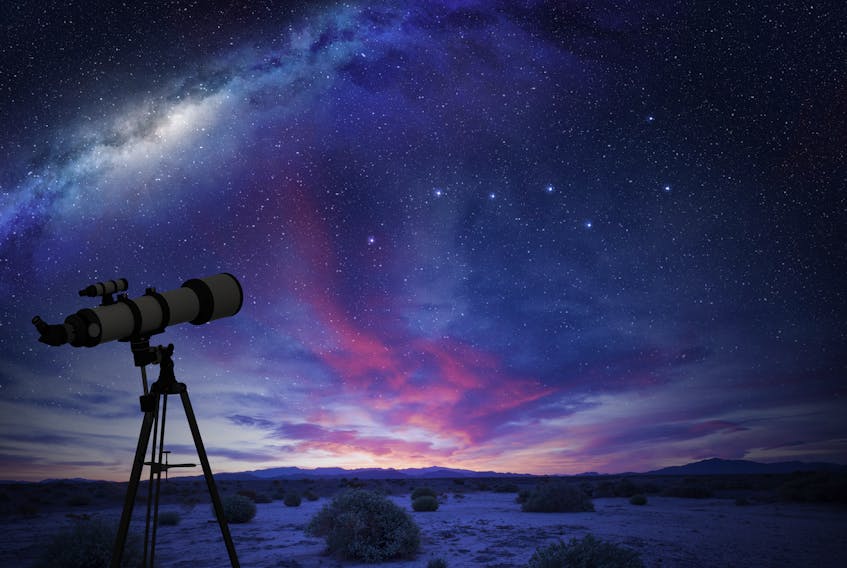Hi Sky Gals and Gals
Before I start on this month’s subject, obviously, if you’re reading this, you have some interest in astronomy. What you can try to do is get someone else interested. Get them to read the article and if you go out to view, take them out with you. Always think of taking children out with you.
Spring and autumn bring a very different view of the night sky than the summer or winter. We live in the Milky Way, our galaxy, a huge collection of billions of stars. We see this as a band of light – a milky way, arching high through our sky chiefly in summer and winter. If we were outside our galaxy, it would look like a great spiral with a hub or centre with arms spiralling out from a bar in the middle and away. If looking at the galaxy sideways, it is almost like seeing two fried eggs back to back.
Our sun and solar system lie in one of those arms, over halfway from the centre of the galaxy to its edge. In summer, we are looking towards the centre of the galaxy. In the winter, we are looking towards the outer edge away from the centre. In both circumstances, we are looking through the plane of the Milky Way or fried eggs and, thus, through a large number of the stars, clouds of gas and dust globular and open clusters and other material in this Milky Way.
In addition, we should be aware that there is a black hole in the middle of our galaxy – something to discuss in a later article.
In the spring and autumn, our orientation is such that we are more or less looking up or down at 90 degrees to the plane of the galaxy, and while it is still a large number, we are looking through a much smaller number of stars. Because of this, we can see outside of our own galaxy much more easily and be able to view the incredible number of other galaxies and other objects in our visible universe.
So, what is in the sky for us to see in this month of June. I think this is the busiest month in a while.
What does our sky look like as dusk falls and night follows?
Let’s start by discussing Mercury. Mercury is the closest planet to the sun and thus speedily whips around it – every 88 days. Visually, it never strays far from the sun and is only visible in the evening or predawn sky. For half of its orbit, it seems to mover further from the sun to a point called greatest elongation, and then it comes back and passes either behind the sun or between us and the sun. This month, Mercury stays in the evening sky until it passes between us and the sun – inferior conjunction– on June 30. However, by two weeks, it loses height and brightness as the month passes.
As June opens, Mercury is the only planet in our evening sky. Jupiter and Saturn are slowly switching from morning planets to evening planets. Saturn begins the month rising about 15 minutes behind Jupiter. The gap between the two widens as the month passes. Both planets are retrograding as the month passes. I will explain “Retrograde Motion” in a future article, or if you are really keen, you can google it!
So, we have already touched on the morning a little as Jupiter and Saturn do rise hours ahead of dawn as the month begins but aside from these two, we see Mars. Mars rises somewhat about 90 minutes after midnight on June 1 and by 12:30 a.m. by month’s end in the southeast.
Meanwhile, Venus will become visible in the morning sky about June 10, but it may be several days later before we can spot it in the east.
The moon is full on June 6, and the new moon is on June 20. In addition, on June 19th, you can, with care see the old crescent moon lower and to the left of Venus. You may need Binoculars for this.
Rolly Chiasson is your night sky guy. His column runs monthly. To comment or get in touch with him email [email protected].









